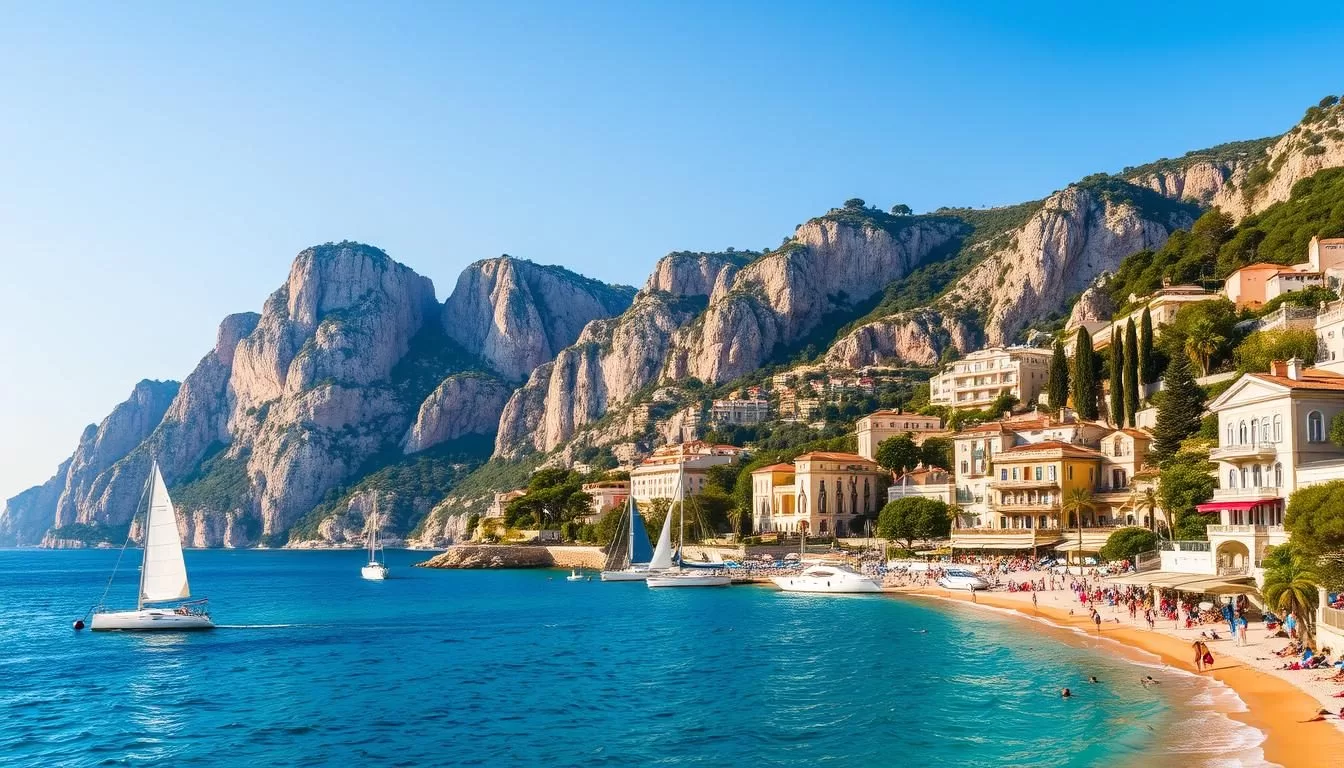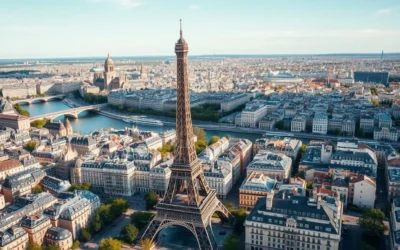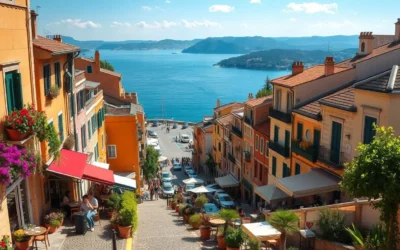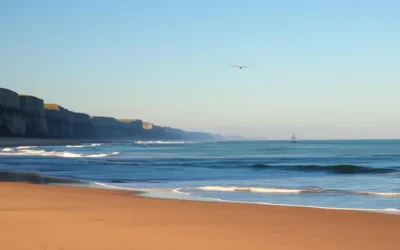✓ Accommodations ✓ Flights ✓ Rental Cars
The coast of the French Riviera is a treasure trove of breathtaking landscapes, charming villages, and luxurious experiences. With its azure waters, sandy beaches, and picturesque towns perched on hillsides, this Mediterranean coastline has been a magnet for travelers for centuries.
As you explore this stunning region, you’ll discover its unique charm, including a special microclimate that boasts over 300 days of sunshine per year, making it an ideal destination for a year-round getaway. Whether you’re planning a romantic escape, a family vacation, or a solo adventure, the French Riviera has something to offer everyone.
Discovering the Charm of the French Riviera
As you step onto the French Riviera, you’re immediately enveloped in its unique charm and sophistication. The French Riviera, also known as the Côte d’Azur, is a destination that captivates visitors with its blend of natural beauty, cultural heritage, and luxurious atmosphere.
What Makes the Côte d’Azur Special
The region’s special appeal comes from its perfect Mediterranean climate, featuring mild winters and warm summers with that famous azure blue sea. This climate has allowed the French Riviera to become a haven for gardeners who have planted tropical plants from all over the world, creating beautiful botanical gardens that complement the historic villas.
The French Riviera is famous for its glamorous towns, such as Nice and Cannes, which offer a range of experiences from luxury shopping to cultural events. The town of Villefranche-sur-Mer, with its colorful waterfront, is a particular gem, offering visitors a glimpse into the traditional fishing villages that once dotted the coast.
| Aspect | Description | Highlight |
|---|---|---|
| Climate | Mediterranean climate | Mild winters and warm summers |
| Cultural Heritage | Rich history and art | Attracted artists like Picasso and Matisse |
| Luxury and Leisure | Luxurious hotels and villas | Cannes Film Festival and Promenade des Anglais |
A Brief History of the French Riviera
Historically, the French Riviera transformed from a collection of simple fishing villages to an international playground for the wealthy and artistic elite, beginning in the late 18th century. The area became particularly popular between the World Wars (1920-1940), when it became the established European destination for the rich and famous, leading to a construction boom of luxurious hotels, casinos, and villas.
The French Riviera has been an important part of art history, attracting artists who were drawn to the region’s exceptional light and scenery. At one time, it was a haven for artists like Renoir, who found inspiration in the landscapes and townscapes of the Côte d’Azur.
Where Exactly Is the French Riviera?
If you’re considering a vacation in southeastern France, understanding the geographical boundaries of the French Riviera is essential. The French Riviera, also known as Côte d’Azur, is not an administrative region like Alsace or Burgundy but a distinct coastal area within the Provence region.
Geographical Boundaries
The French Riviera’s boundaries are defined by its natural and administrative borders. To the east, it is bounded by the Italian border near Menton. The Mediterranean Sea forms its southern boundary, while the Maritime Alps create a natural northern boundary. The western edge is less clearly defined, with some considering Saint-Tropez as the boundary, while others extend it to Toulon or even Marseille.
| Boundary | Description |
|---|---|
| Eastern | Italian border near Menton |
| Southern | Mediterranean Sea |
| Northern | Maritime Alps |
| Western | Disputed, between Saint-Tropez and Marseille |
Major Cities and Towns
The French Riviera is dotted with cities and towns that are renowned for their beauty and charm. Nice is considered the capital of the Côte d’Azur, known for its vibrant atmosphere and Promenade des Anglais. Cannes is famous worldwide for its film festival, while Antibes boasts an historic old town and picturesque port. Monaco, an independent principality, is geographically part of the Riviera and is known for its luxury and glamour.
Other charming towns include Menton, often called the “Pearl of France”; Villefranche-sur-Mer, with its colorful waterfront; Èze, a medieval village perched on a hilltop; and Saint-Paul-de-Vence, a haven for artists.
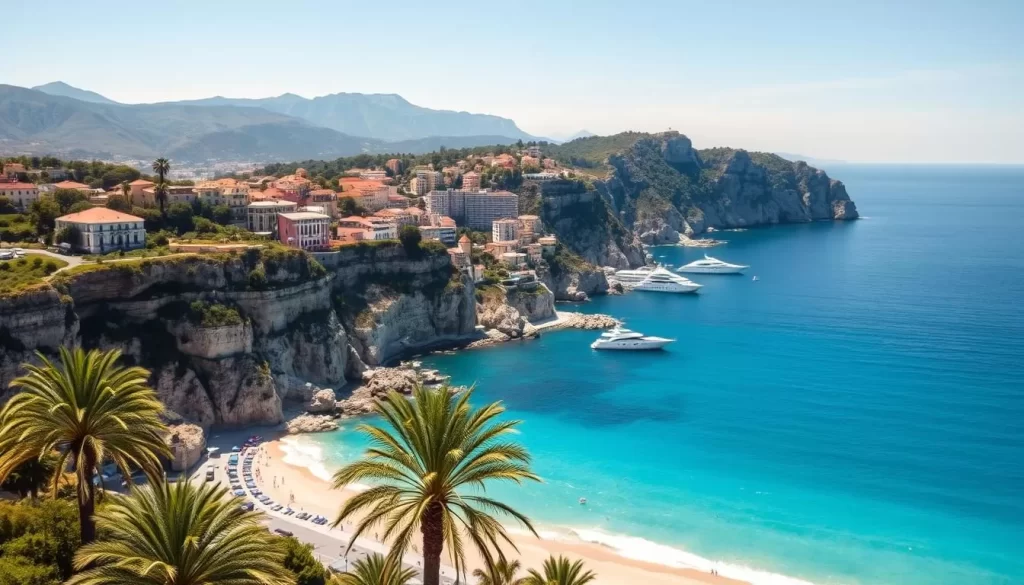
Best Time to Visit the French Riviera
The French Riviera, known for its over 300 days of sunshine, is a year-round destination, but the experience differs greatly depending on when you go. As this part of France is famed for its sunny weather, it’s essential to consider what you’re looking for in your visit: warm weather, fewer crowds, or specific activities.
High Season: Summer Months
The high season in the French Riviera, which effectively runs from June 1st to the middle of September, is characterized by warm temperatures, making it perfect for beach days and swimming. However, this period comes with significant drawbacks, including crowds and higher prices. If you’re planning to visit during this time, be prepared for overcrowded beaches, long lines at attractions, and challenges in securing restaurant reservations.
During the peak summer months, July and August, the region is bustling with tourists. While the warm weather is ideal for water activities, the crowds can detract from the experience. If you’re looking for a more relaxed vibe, you might want to consider the shoulder season.
Shoulder Seasons: Spring and Fall
The shoulder seasons, which include spring (April-May) and fall (September-October), offer a more balanced experience. During spring, the temperatures become comfortable by March, and rain is less frequent, making it an excellent time to explore the region’s attractions without the peak season crowds. In the fall, the weather remains warm enough for swimming and sailing, but with significantly fewer tourists, making it an ideal time for those seeking a more relaxed experience.
- Pleasant weather with mild temperatures
- Fewer crowds compared to the peak summer months
- More reasonable prices for accommodations and tourist services
This balance makes the shoulder seasons the best time to visit the French Riviera for most travelers.
Low Season: Winter Months
The low season, from November to February, is characterized by cooler temperatures and some businesses being closed. However, the Riviera remains largely frost-free, and there are unique experiences to be had, such as the Menton Lemon Festival in February and the blooming mimosa flowers.
While it’s not ideal for beach activities, the low season can be a good time for those looking for a more serene experience or interested in exploring the region’s cultural offerings without the crowds.
How Long to Spend in the French Riviera
The allure of the French Riviera is undeniable, but how long should you stay to experience it fully? With its picturesque towns, stunning beaches, and rich cultural heritage, the Côte d’Azur has something for every traveler. To truly immerse yourself in the beauty and charm of this iconic destination, careful planning is essential.
When deciding on the duration of your trip, consider what you want to achieve. Are you looking to relax on the beaches, explore historic towns, or indulge in the local cuisine? The French Riviera offers a diverse range of experiences, and the ideal length of stay can vary accordingly.
One-Week Itinerary
A week is a great amount of time to get a good taste of the French Riviera. You can visit key destinations like Nice, Cannes, and Monaco, and still have some days to relax on the beaches or explore charming villages. Here’s a sample itinerary:
| Day | Location/Activity |
|---|---|
| 1-2 | Nice: Explore the Promenade des Anglais, Old Town, and Chagall Museum |
| 3 | Cannes: Visit the Croisette, Palais des Festivals, and enjoy the beaches |
| 4 | Monaco: Discover the Grand Prix Circuit, Casino de Monte-Carlo, and the Prince’s Palace |
| 5 | Villefranche-sur-Mer: Enjoy the colorful waterfront, citadel, and views |
| 6-7 | Relax on the beaches or explore Èze and Saint-Paul-de-Vence |
Two-Week Itinerary
For a more leisurely trip, consider spending two weeks in the French Riviera. This allows you to explore at a relaxed pace, discover hidden gems, and enjoy the local lifestyle. You can combine beach days with sailing excursions, visit inland villages, or take day trips to nearby Provence or the Italian border towns.
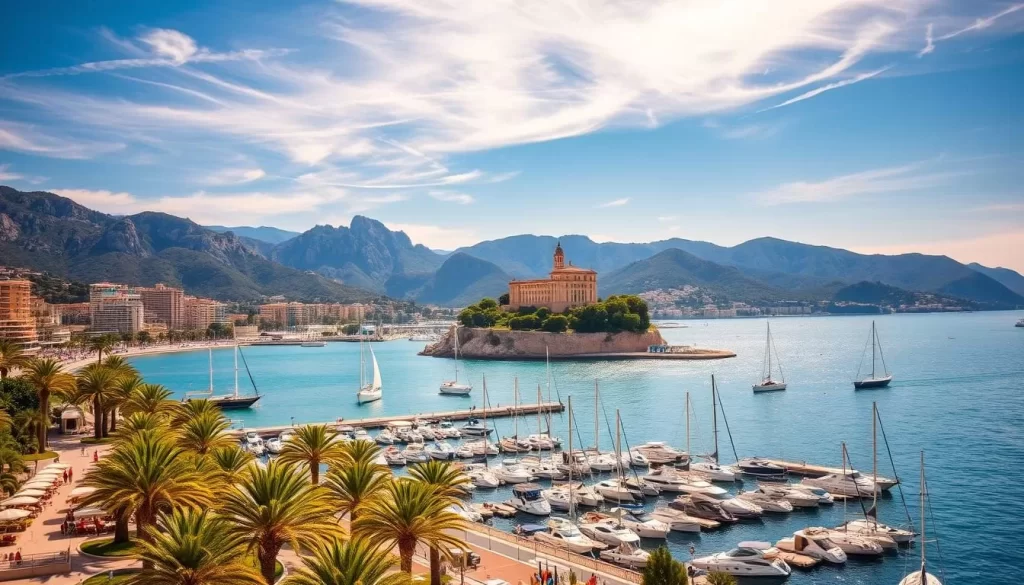
To make the most of your visit to the French Riviera, remember to embrace the relaxed Mediterranean pace of life. Plan for long lunches, afternoon beach sessions, and leisurely strolls. Whether you have one week or two weeks, the French Riviera promises an unforgettable experience.
Getting to the French Riviera
Whether you’re coming from within Europe or across the globe, getting to the French Riviera is straightforward. The region is well-connected by air and rail, making it easily accessible for travelers from various parts of the world.
Flying to Nice Côte d’Azur Airport
The main airport serving the French Riviera is Nice-Côte d’Azur Airport, located in Nice. As an international airport, it offers direct flights to many French cities, major European capitals, the Middle East, Northern Africa, and the USA & Canada. For travelers from the United States, there are daily direct flights to Nice from JFK and Newark airports, as well as from Atlanta. If you’re visiting Paris before heading to the Riviera, you can easily find a domestic flight, with 24 flights per day from Charles de Gaulle and Paris-Orly airports.
The airport is conveniently situated just west of Nice’s city center, with excellent transportation links. A tram runs directly from the airport to downtown Nice in about 30 minutes. Additionally, taxis, buses, and rental car facilities are readily available, making it easy to get to your final destination.
Arriving by Train
For those already in France, the high-speed TGV train network provides a comfortable and relatively quick alternative to flying. You can travel directly from Paris to Nice in approximately 5.5 hours, from Lyon in 4.5 hours, and from Marseille in under 3 hours. Train travel not only offers a more environmentally friendly option but also allows you to enjoy the scenic views of the French countryside and Mediterranean coastline as you approach the Riviera.
Using the train is a convenient way to see more of France during your trip. With the comfort and speed of the TGV, you can make the most of your time and arrive at your destination feeling relaxed.
Getting Around the French Riviera
Getting around the French Riviera is easier than you think, with various transportation options available. Whether you’re looking to explore the coastal towns, visit historic villages, or simply enjoy the scenic views, there’s a way to get around that suits your needs.
Renting a Car
Renting a car is highly recommended for exploring the French Riviera, as it provides the most flexibility. With a car, you can visit smaller villages, take scenic coastal drives, and stop at viewpoints that aren’t accessible by public transportation. The easiest place to rent a car is at Nice Côte d’Azur Airport, where major international rental companies have offices.
Having a car allows you to drive along the famous Côte d’Azur, stopping at charming towns like Villefranche-sur-Mer and Èze. You can also explore the surrounding countryside and enjoy the scenic views at your own pace.
Public Transportation Options
For those who prefer not to drive, the French Riviera has a comprehensive public transportation network. Buses operated by Lignes d’Azur and Zou connect all major towns, with fares starting at €1.50 per journey or €5 for a day pass. The coastal train (TER) is another excellent option for traveling between main towns, offering scenic views and avoiding traffic congestion.
Using public transportation is convenient and affordable, allowing you to enjoy the views without the hassle of driving. You can take the train or bus to popular destinations like Nice, Cannes, and Monaco.
Boat Tours and Water Taxis
For a unique perspective on the coastline, consider taking a boat tour or water taxi. These services operate between coastal towns, offering a relaxing way to see the sights. You can take a boat tour from Nice to Villefranche-sur-Mer or visit Monaco by sea.
Boat tours and water taxis provide a different viewpoint on the French Riviera’s beauty, allowing you to appreciate the coastline from the water. This is a great way to spend a day or evening, enjoying the Mediterranean views.
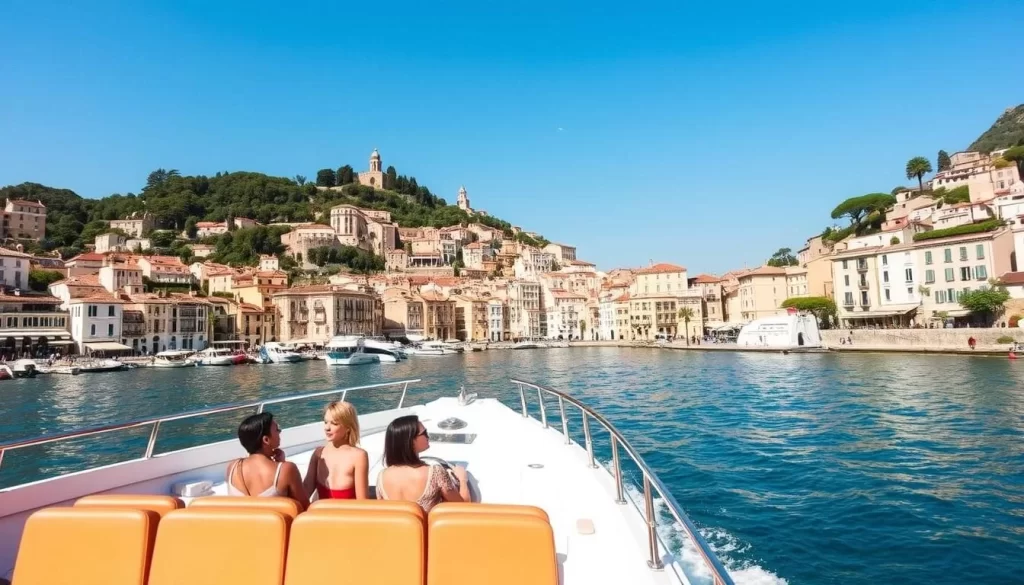
Where to Stay in the French Riviera
When planning your trip to the French Riviera, deciding where to stay is a key consideration. The region offers a diverse range of accommodations, from luxurious hotels to charming boutique properties, each providing a unique experience.
Villefranche-sur-Mer: The Perfect Home Base
Villefranche-sur-Mer stands out as an ideal home base, offering a perfect balance of charm, convenience, and authenticity. This colorful waterfront town is just 25 minutes from Nice Airport but feels worlds away from the tourist crowds.
For accommodations in Villefranche, consider the Welcome Hotel right on the water for a prime location. Other options include Hotel De La Darse for a budget-friendly choice with great views, or Hôtel le Provencal for a more luxurious experience.
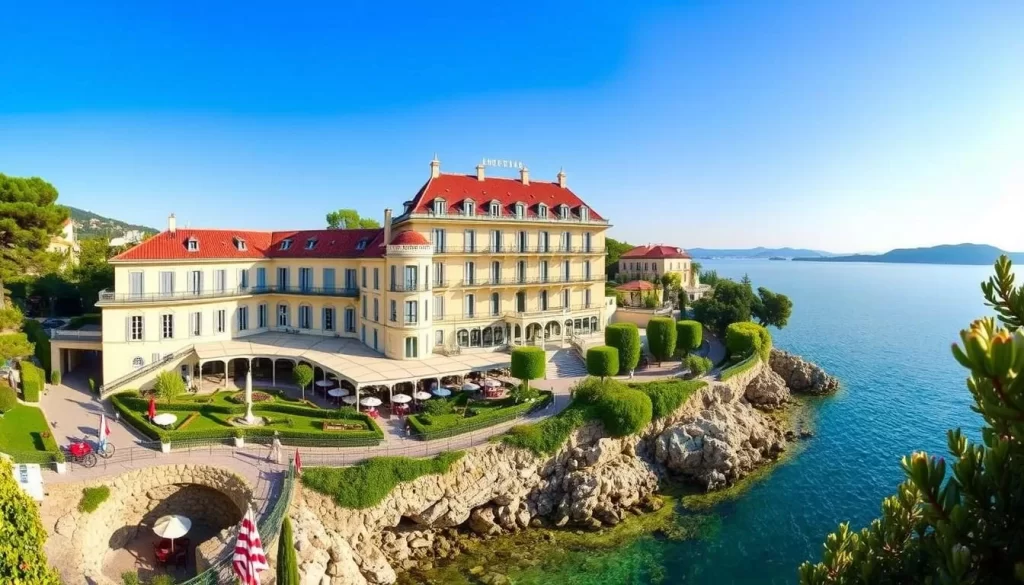
Nice: Urban Convenience
Nice provides urban convenience with excellent transportation connections, a wide range of hotels for all budgets, and easy access to the airport and train station. You can choose from historic hotels like Le Negresco or more affordable options like Hotel Carlton.
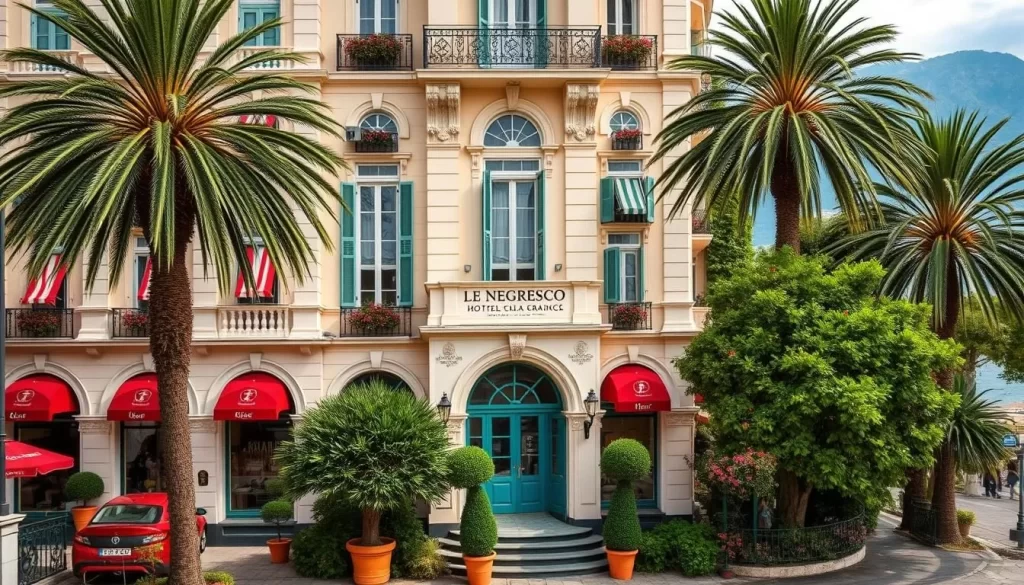
Antibes and Cannes: Glamour and Beaches
For those seeking glamour and beautiful beaches, Antibes and Cannes offer a mix of luxury hotels and boutique properties. These towns are perfect for travelers looking to experience the high-end lifestyle of the French Riviera.
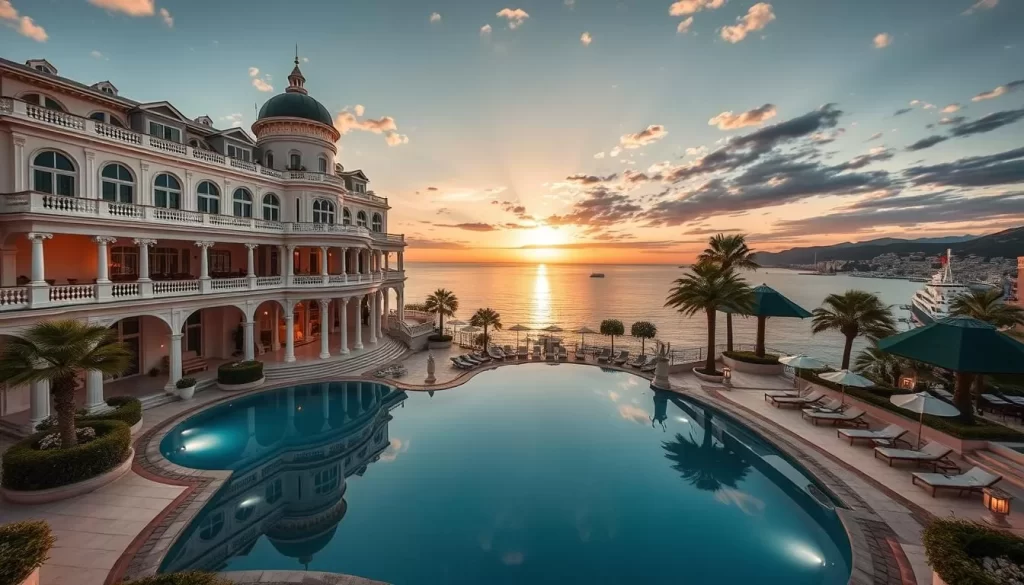
Saint-Tropez: Luxury and Exclusivity
Saint-Tropez provides the ultimate exclusive experience with legendary establishments like Le Yaca, though at premium prices. It’s the perfect destination for those looking to indulge in luxury and sophistication.
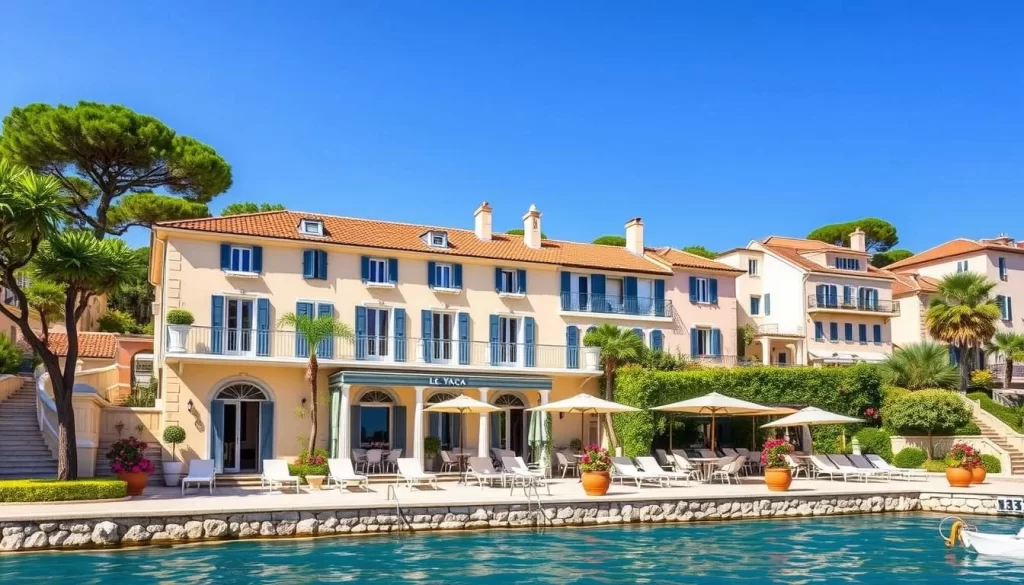
French Riviera, France: Best Things to Do – Top Picks
The French Riviera, with its stunning coastline and fascinating history, is a place where you can unwind on beautiful beaches or immerse yourself in art and cultural experiences.
As you explore this enchanting region, you’ll discover a diverse array of activities that cater to all interests. Whether you’re looking to relax on pristine beaches, explore historic towns, or indulge in world-class museums, the French Riviera has something for everyone.
Beach Days and Coastal Activities
Spending a day at the beach is an essential part of any French Riviera visit. Enjoy the clear turquoise water at popular spots like Plage des Marinières in Villefranche-sur-Mer, Plage de la Mala in Cap d’Ail, or Plage du Marché in Menton. You can rent loungers or simply spread your towel on the public sections of these beautiful beaches.
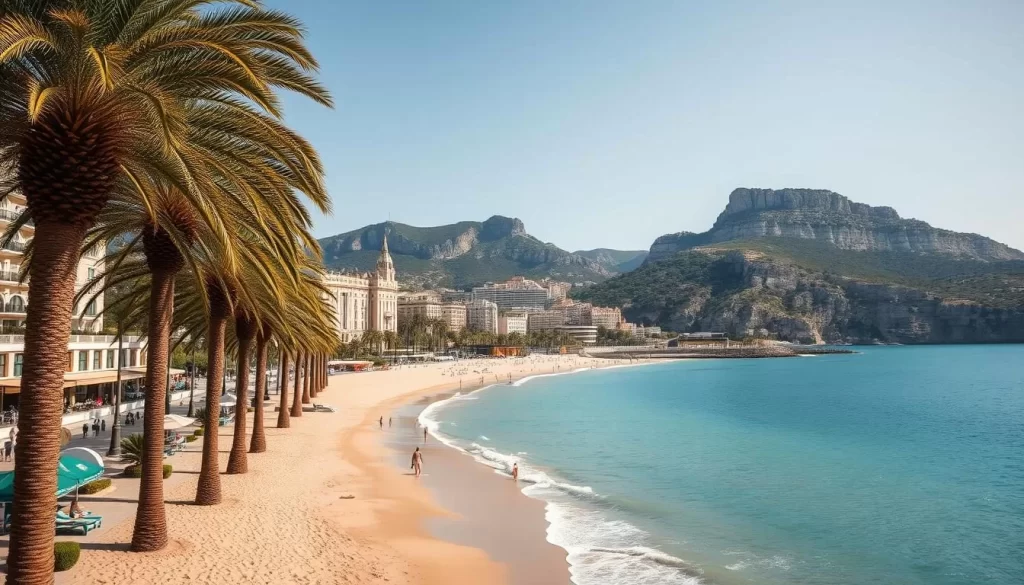
Exploring Historic Old Towns
The French Riviera is dotted with charming towns and old town areas that are steeped in history and charm. Wander through the narrow medieval streets of Nice’s Vieille Ville, explore Antibes’ 16th-century ramparts, or get lost in the winding passages of Villefranche-sur-Mer, famous for its Rue Obscure.
| Town | Main Attraction | Best Time to Visit |
|---|---|---|
| Nice | Vieille Ville | Morning |
| Antibes | 16th-century Ramparts | Afternoon |
| Villefranche-sur-Mer | Rue Obscure | Evening |
Cultural Experiences and Museums
The French Riviera is also a haven for art lovers and those interested in cultural experiences. Visit world-class museums like the Picasso Museum in Antibes, housed in the Château Grimaldi where Picasso once worked, the Matisse Museum in Nice, or the Jean Cocteau Museum in Menton. These institutions offer a glimpse into the rich artistic heritage of the region.
Don’t miss the opportunity to experience local life by visiting the colorful markets found in every town, where you can sample regional specialties, purchase fresh produce for a beach picnic, or find unique artisanal souvenirs to take home.
Must-Visit Cities in the French Riviera
As you explore the French Riviera, you’ll discover a collection of captivating cities, each with its own charm and attractions that make them unmissable destinations.
Nice: The Capital of the Côte d’Azur
Nice, the unofficial capital of the French Riviera, offers a perfect blend of urban sophistication and Mediterranean charm. You can start your exploration at the colorful Marché aux Fleurs (flower market) in the old town, try authentic socca (chickpea pancake) at Chez Thérésa, and then climb the steps to Colline du Château for panoramic views of the city and its crescent-shaped bay.
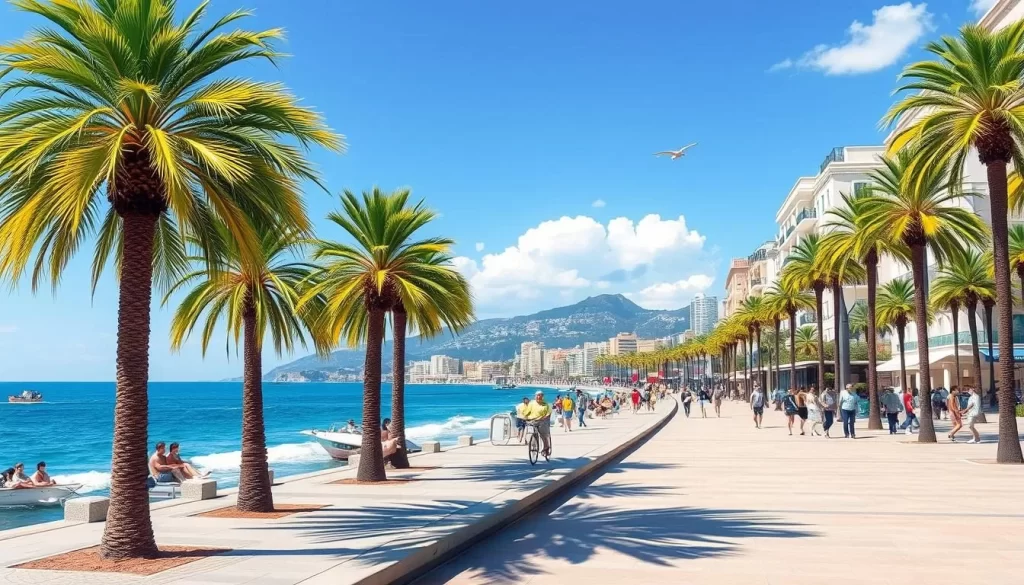
Cannes: Beyond the Film Festival
Cannes is much more than just its famous film festival. You can discover its charming Le Suquet historic quarter with winding streets and stunning views, shop along the elegant Rue d’Antibes, and take a boat trip to the nearby Lérins Islands for a peaceful escape.
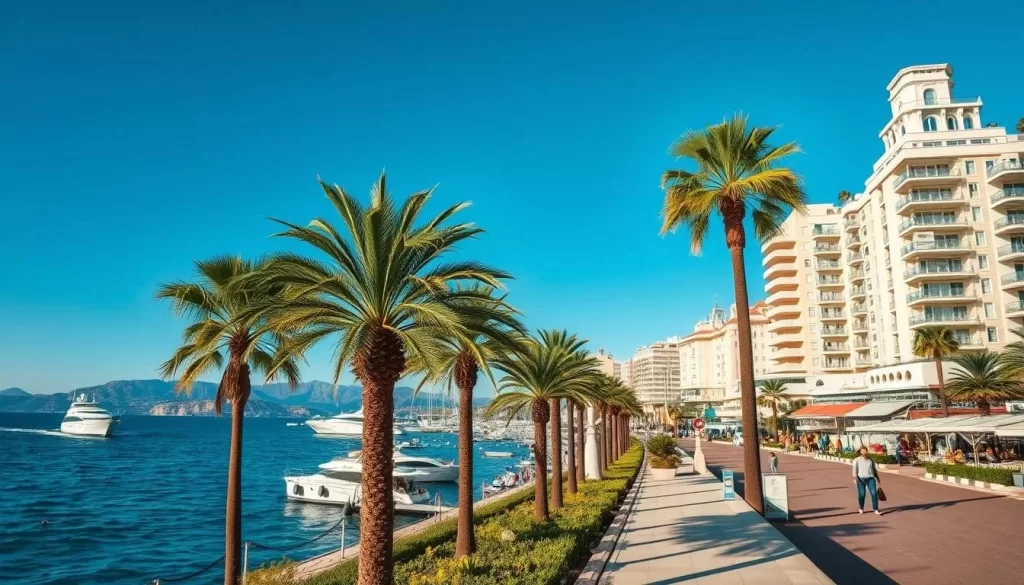
Monaco: Glamour and Grandeur
Monaco, though technically an independent principality, is an essential Riviera stop. You can witness the changing of the guard at the Prince’s Palace, try your luck at the legendary Monte Carlo Casino, explore the stunning Oceanographic Museum, or visit during the Grand Prix for Formula 1 excitement.
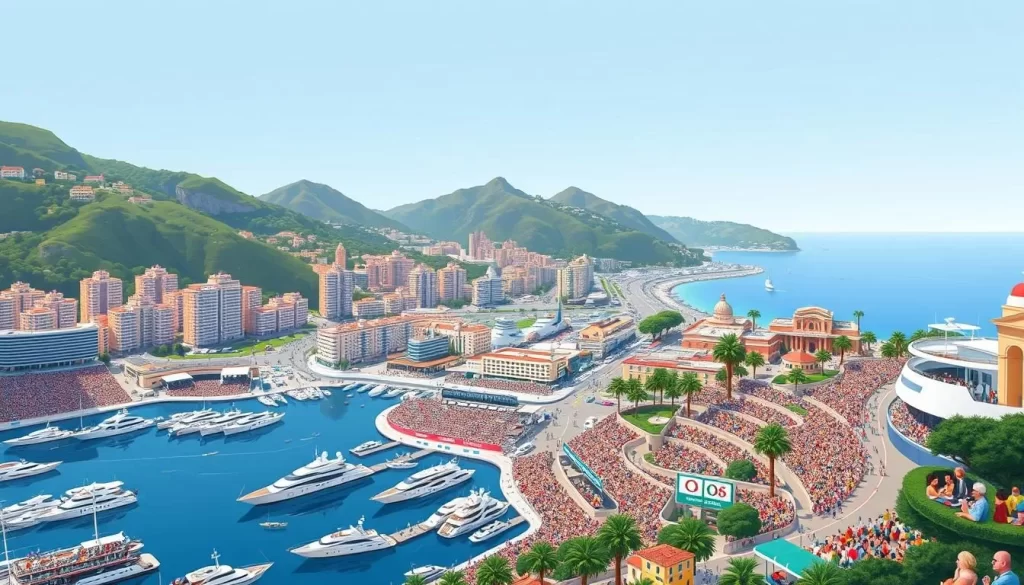
Menton: The Pearl of France
Menton, known as the “Pearl of France,” sits on the Italian border and charms visitors with its pastel-colored buildings, microclimate that supports lush gardens like the Val Rahmeh botanical garden, and a delightful old town crowned by the Basilique Saint-Michel with its distinctive bell tower.
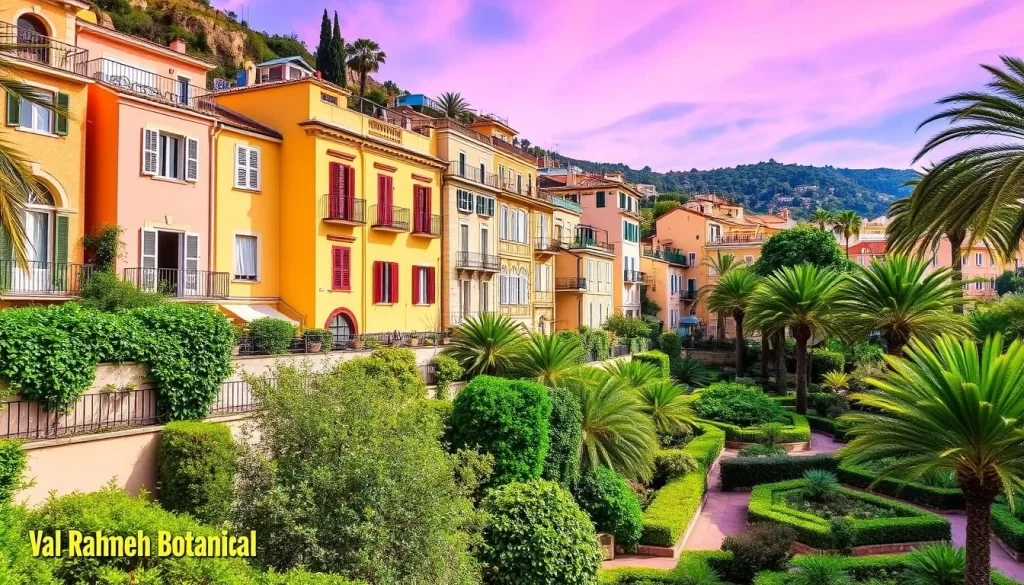
Charming Towns and Villages Worth Exploring
The French Riviera’s diverse character is best experienced in its charming, lesser-known towns and villages. Beyond the major cities, these hidden gems offer authentic experiences away from the crowds, showcasing the region’s rich history, art, and natural beauty.
Colorful Waterfront Charm
Villefranche-sur-Mer captivates visitors with its colorful waterfront buildings, narrow medieval streets, and a beautiful bay with crystal-clear waters. You can walk the whole village in under an hour, enjoying the local atmosphere without the crowds found in larger towns. The main beach, Plage des Marinières, is just a short walk from the town center, offering a perfect spot for swimming.
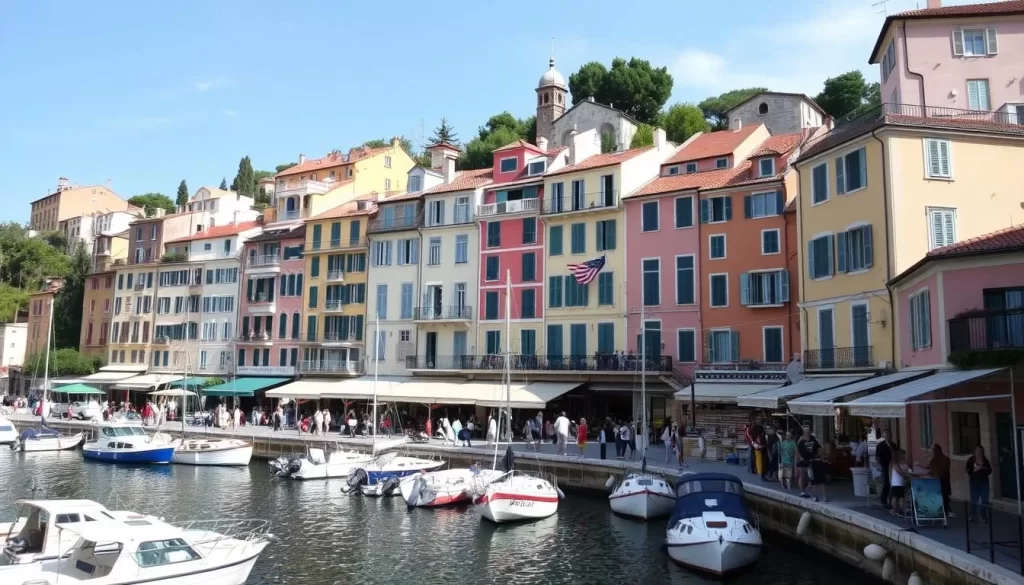
Ancient Walls and Picasso
Antibes is a must-visit for history and art lovers, featuring impressive 16th-century ramparts and the Picasso Museum housed in Château Grimaldi. The old town is charming, with narrow streets and a lively atmosphere, while Port Vauban, the largest marina on the Riviera, offers a glimpse into the region’s maritime significance.
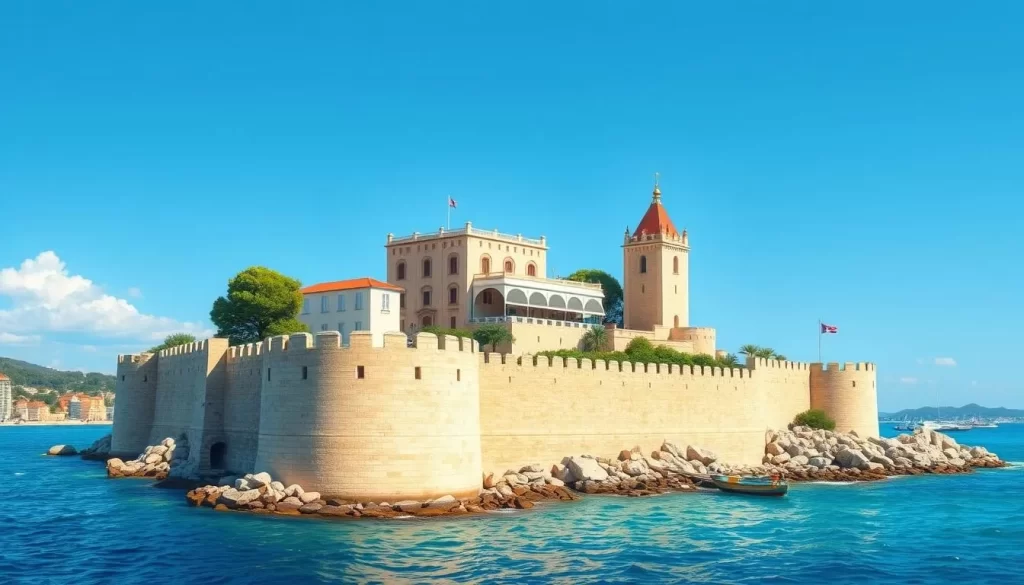
Medieval Village with Panoramic Views
Perched on a hilltop 1,400 feet above sea level, the medieval village of Èze offers breathtaking panoramic views of the coastline. Visitors can explore the narrow stone streets, visit the exotic garden, and experience the charm of this ancient village.
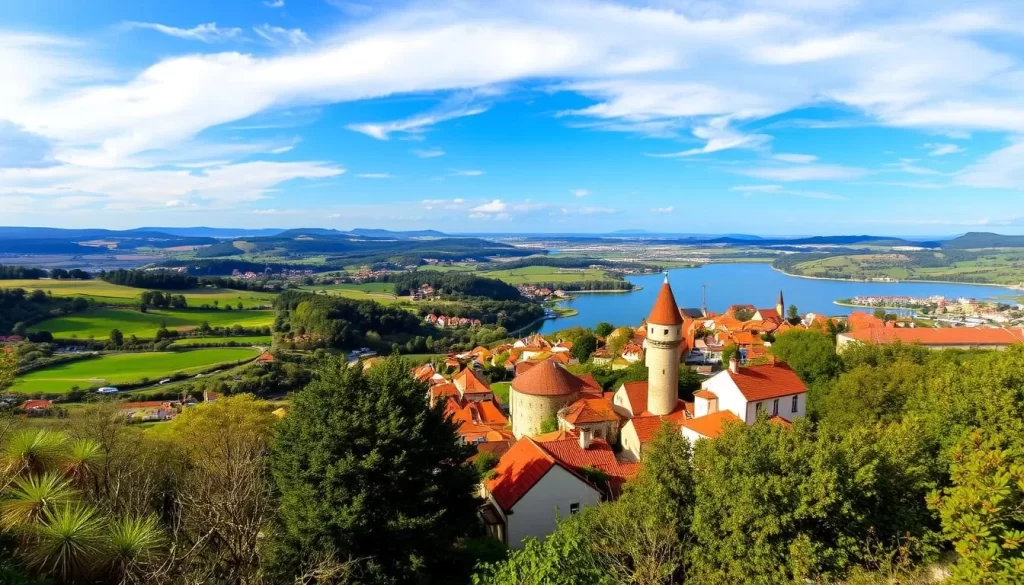
Artists’ Haven
Saint-Paul-de-Vence has been an artists’ haven since the 1920s, with its well-preserved medieval architecture now housing galleries, studios, and the world-class Fondation Maeght modern art museum. The legendary La Colombe d’Or hotel, where artists once paid for meals with paintings, is a must-visit for art enthusiasts.
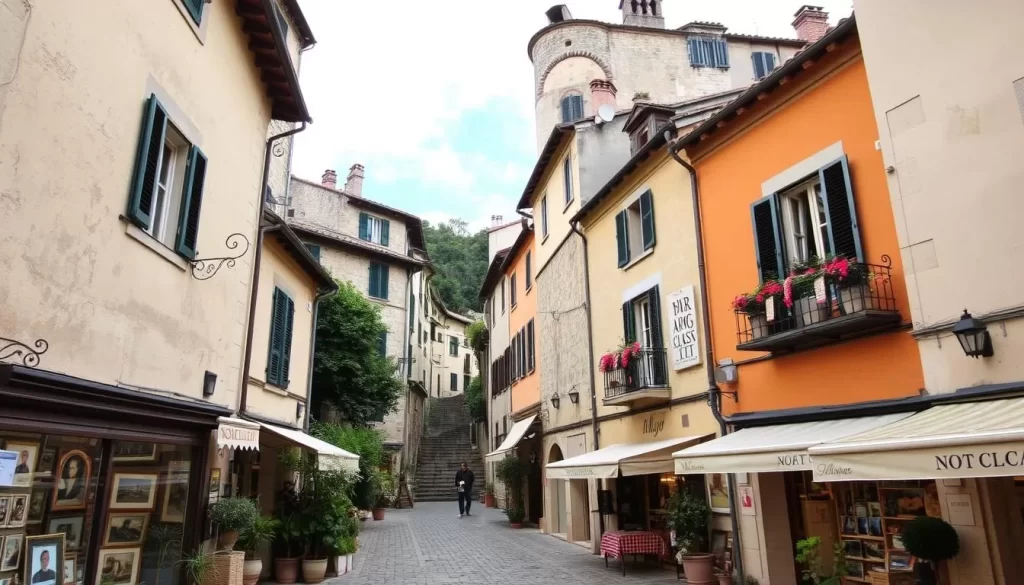
Best Beaches on the French Riviera
From secluded coves to expansive sandy shores, the French Riviera’s beaches are a major draw for visitors. The Côte d’Azur is dotted with a variety of beaches, each offering a unique experience. Whether you’re looking to relax on the sand, enjoy water activities, or simply take in the breathtaking views, the beaches of the French Riviera have something for everyone.
Public Beaches vs. Private Beach Clubs
When planning your beach day, it’s essential to understand the difference between public beaches and private beach clubs. Public beaches are free to access but often come with minimal facilities and can be quite crowded. On the other hand, private beach clubs require an entry fee or lounger rental but offer a range of amenities, including restaurants, changing rooms, and personalized service. This option is ideal for those seeking a more luxurious and relaxed experience.
For example, you might prefer a private beach club if you’re looking for a more secluded and serviced experience. Many of these clubs are located in picturesque towns along the French Riviera, offering a blend of natural beauty and convenience.
Top Beaches to Visit
The French Riviera is home to some truly exceptional beaches. Among the top recommendations are Plage de Pampelonne near Saint-Tropez, known for its 5km stretch of sand and numerous beach clubs. Another favorite is Plage de la Mala in Cap d’Ail, a secluded cove with crystal-clear water that’s perfect for snorkeling.
For families, Plage des Marinières in Villefranche-sur-Mer is an excellent choice, offering gentle slopes into the water and a relaxed atmosphere. If you’re looking for less crowded beaches, consider Plage de Passable on the Saint-Jean-Cap-Ferrat peninsula or Plage de la Garoupe in Antibes, which boasts stunning views of the snow-capped Alps on clear days.
When spending a day at the beach on the French Riviera, don’t forget to respect local etiquette. This includes adhering to designated smoking areas, understanding that topless sunbathing is generally accepted, and wearing water shoes to navigate the predominantly pebbly coastline.
Exploring the beach options along the French Riviera can be a rewarding experience, with each town offering its unique charm and attractions. Whether you’re staying in Nice, Cannes, or another town along the coast, you’re never far from a beautiful beach.
Cultural Attractions and Museums
As a magnet for artists and intellectuals since the late 19th century, the French Riviera boasts an impressive array of museums, galleries, and historic sites. The region’s exceptional light and scenery have inspired heavyweights like Picasso, Chagall, Matisse, and Renoir, resulting in a rich cultural landscape.
Art Museums and Galleries
The French Riviera is home to numerous world-class art museums and galleries. In Nice, you can visit the Musée Matisse and Musée Marc Chagall, showcasing extensive collections of these artists’ works. The Picasso Museum in Antibes, housed in Château Grimaldi, is another must-visit, featuring an impressive collection of Picasso’s art.
Additionally, the Fondation Maeght in Saint-Paul-de-Vence is renowned for its outstanding collection of 20th-century art. This foundation is not only a treasure trove of modern art but also an architectural masterpiece, set amidst beautiful gardens.
Historic Villas and Gardens
The French Riviera is also famous for its historic villas and their stunning gardens. The Villa Ephrussi de Rothschild on Saint-Jean-Cap-Ferrat is a prime example, boasting nine themed gardens and a pink Venetian-inspired palace filled with priceless art and furniture.
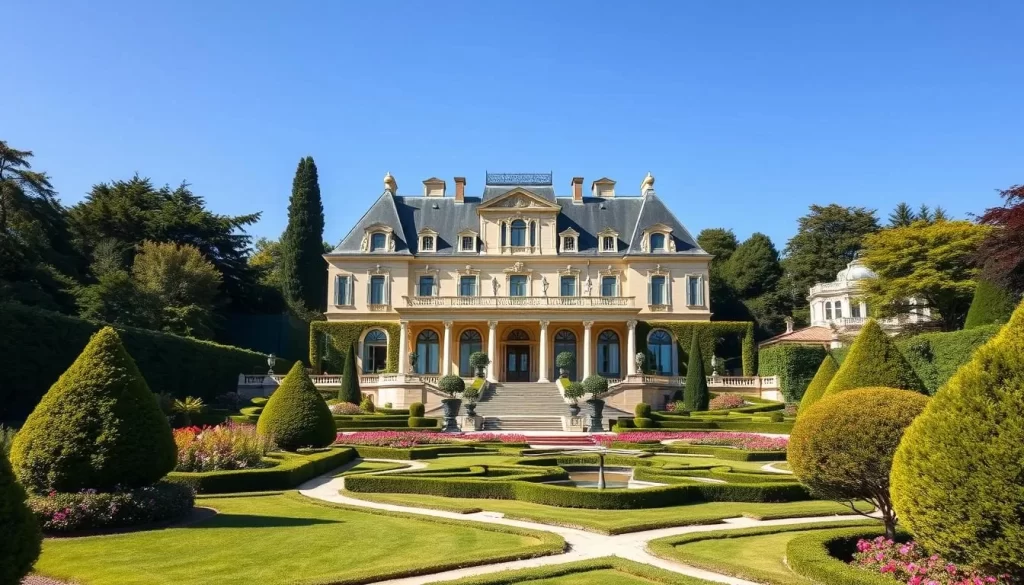
Other notable mentions include the Val Rahmeh botanical garden in Menton, which showcases exotic plants from around the world, and the Jardin Exotique in Èze, offering panoramic views of the Mediterranean. These gardens not only provide a glimpse into the region’s horticultural diversity but also offer serene escapes for visitors.
Whether you’re exploring the village of Saint-Paul-de-Vence or strolling through the historic town of Antibes, the French Riviera offers a wealth of cultural experiences that are sure to enrich your visit.
Day Trips from the French Riviera
From the lavender fields of Provence to the charming Italian border towns, the French Riviera offers a plethora of exciting day trip options. The strategic location of the French Riviera makes it an ideal base for exploring the diverse surrounding regions.
Provence and Lavender Fields

A day trip to Provence offers a complete change of scenery. Visit during June and July to see the famous lavender fields in bloom around Valensole. The hilltop villages of Provence provide a glimpse into traditional rural French life. Consider visiting Gordes with its honey-colored stone buildings, Roussillon with its ochre cliffs, or Lourmarin with its Renaissance castle and charming cafés.
Explore the historic city of Aix-en-Provence with its elegant boulevards, or venture to the spectacular Gorges du Verdon, Europe’s largest canyon with its striking turquoise waters. For nature lovers, the Mercantour National Park in the Alps behind Nice offers hiking trails with spectacular mountain views, alpine lakes, and the opportunity to see wildlife in a pristine natural setting just an hour’s drive from the coast.
Italian Border Towns
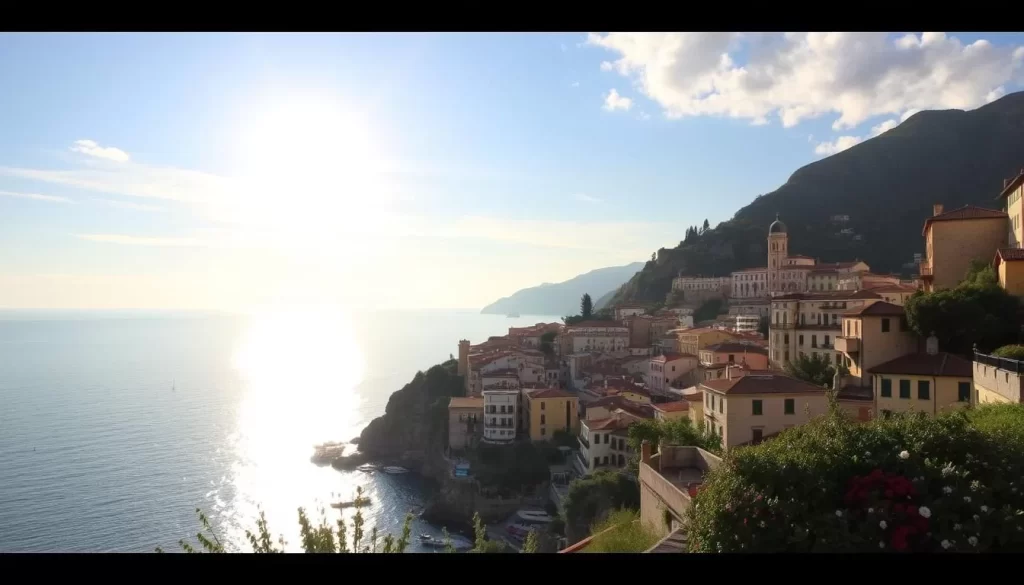
Just across the Italian border, easily accessible by train or car, lie several attractive towns that make perfect day trips. Visit Ventimiglia with its Friday market popular for Italian goods, San Remo known as the “City of Flowers,” or the medieval village of Dolceacqua with its impressive bridge painted by Monet. These towns offer a unique blend of Italian culture and stunning landscapes, making them ideal for a day trip from the French Riviera.
Enjoy the local cuisine, explore the historic centers, and soak up the relaxed atmosphere of these charming Italian border towns. Whether you’re looking for culture, history, or simply a change of scenery, these day trips from the French Riviera are sure to enrich your travel experience.
Food and Dining in the French Riviera
Savoring the French Riviera means indulging in a rich gastronomic experience that combines fresh seafood, local produce, and fragrant herbs. The region’s cuisine is a reflection of its cultural heritage and the bounty of the Mediterranean.
Local Specialties to Try
The French Riviera offers a distinctive cuisine that blends Provençal traditions with Mediterranean influences. You should try local specialties such as socca, a crispy chickpea pancake popular in Nice, and pissaladière, a caramelized onion tart with olives and anchovies. Another must-try is the authentic salade niçoise, which, in its true form, excludes cooked vegetables. For a unique twist on this salad, try pan bagnat, essentially a niçoise salad served in a round bread roll.
Seafood is a highlight of Riviera dining. Look for bouillabaisse, a hearty fish stew originating from Marseille, though it’s also enjoyed along the Côte d’Azur. Fresh grilled fish served with olive oil and herbs is another staple, as are oursins (sea urchins), considered a delicacy when in season from November to March.
Recommended Restaurants
For a memorable dining experience, consider waterfront restaurants like La Mère Germaine in Villefranche-sur-Mer. Reservations are recommended, but the tables in front are first-come, first-served, so arriving early (around 7 pm) is advisable.

Another excellent option is La Colombe d’Or in Saint-Paul-de-Vence, a restaurant with a rich history where artists once paid with paintings. For a more casual but authentic local cuisine experience, visit Les Garçons.
Don’t overlook the simple pleasures of assembling a picnic from local markets. Purchase fresh bread, cheese, olives, and charcuterie from market vendors, add a bottle of rosé from Provence, and enjoy lunch with a view at one of the many scenic spots along the coast. You can also stop by Soléa Gelateria for delicious gelato and sorbet, with the mango sorbet being a particular highlight.
Shopping and Local Markets
Shopping in the French Riviera is an adventure in itself, with a mix of high-end designer stores, artisan workshops, and vibrant markets. As you explore the towns and villages along the Côte d’Azur, you’ll discover a diverse range of shopping experiences that cater to all tastes and budgets.
Artisan Crafts and Souvenirs
The French Riviera is renowned for its rich tradition of artisan crafts, making it an ideal destination for those seeking unique souvenirs. In Vallauris, a town famous for its pottery, you can visit the ceramic and pottery museums to witness the craftsmanship that has attracted artists like Pablo Picasso. The town of Biot is another must-visit, where you can observe master glassmakers at work, creating beautiful bubble-filled glass creations.
For art enthusiasts, the galleries of Saint-Paul-de-Vence offer an exquisite selection of paintings and sculptures by local artists. Whether you’re looking for a special memento or a gift, these artisan workshops and galleries provide a glimpse into the region’s rich cultural heritage.
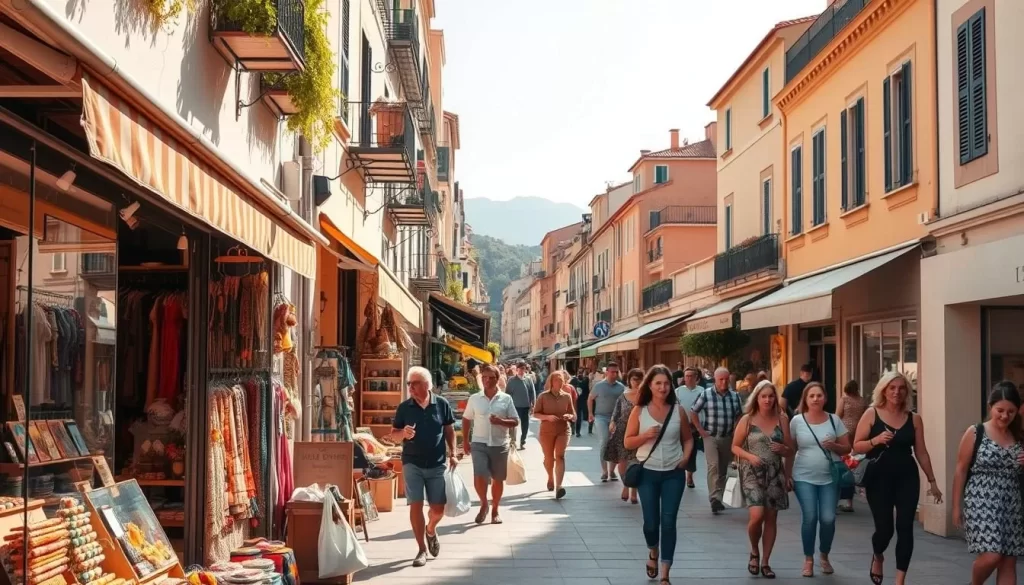
Farmers Markets and Food Halls
No visit to the French Riviera would be complete without experiencing its vibrant markets. The Cours Saleya market in Nice is a highlight, transforming into a bustling flower and produce market in the morning and a craft market in the evening. In Cannes, the Forville Market offers a sensory delight with its array of fresh produce and regional specialties.
Each town along the coast has its own market day, typically held in the morning. These markets are perfect for sampling local delicacies, from fresh fruits to artisanal cheeses, and shopping for unique souvenirs like Provençal fabrics and handmade jewelry.
| Town | Market Day | Specialties |
|---|---|---|
| Nice | Daily | Flowers, Produce, Crafts |
| Cannes | Daily | Fresh Produce, Regional Specialties |
| Ventimiglia | Friday | Fresh Produce, Local Crafts |
For luxury shopping, the designer boutiques along Cannes’ La Croisette and Nice’s Avenue Jean Médecin offer the latest fashion from French and international designers. Whether you’re browsing through local markets or shopping in upscale boutiques, the French Riviera promises an unforgettable shopping experience.
Practical Travel Tips for the French Riviera
Before you embark on your journey to the French Riviera, here are some practical tips to ensure a smooth and enjoyable trip. The French Riviera, or Côte d’Azur, is a popular destination that attracts visitors from around the world with its stunning beaches, charming towns, and rich cultural heritage.
Budget Considerations
The French Riviera is often associated with luxury and high costs, but it is possible to visit on a variety of budgets. To save money, consider visiting during the shoulder seasons when prices are lower, and opt for accommodations in smaller towns rather than the more glamorous cities like Cannes or Monaco. Additionally, dining at local markets or opting for set lunch menus can help reduce expenses.
For transportation, you have the option to use public transportation, which is efficient and connects major towns along the coast. If you prefer more flexibility, renting a car for part of your trip can be a good idea, allowing you to explore the surrounding areas at your own pace.
| Budget Category | Cost-Saving Tips |
|---|---|
| Accommodation | Stay in smaller towns like Villefranche-sur-Mer or Èze |
| Dining | Opt for market picnics or set lunch menus |
| Transportation | Use public transportation or rent a car for flexibility |
Language and Communication
While many locals in tourist areas speak English, learning a few basic French phrases can enhance your experience. Downloading a translation app like Google Translate that works offline can be very helpful, especially in smaller towns where English proficiency may be limited.
It’s also a good idea to walk around the towns and get familiar with the local culture. Many charming towns along the French Riviera have cobblestone streets and historic areas that are best explored on foot.
Safety and Health
The French Riviera is generally very safe for tourists, but it’s always wise to take normal precautions against pickpocketing in crowded areas and on public transportation, particularly in Nice and Cannes during the high season.
Staying hydrated is crucial, especially during the hot summer days. Make sure to carry plenty of water with you as you explore the area. It’s also advisable to start your day early to avoid the crowds at popular sites.
Packing Tips
Packing for the Mediterranean climate means bringing lightweight clothing, but don’t forget a light sweater or jacket for cooler evenings. Comfortable walking shoes are a must for exploring the cobblestone streets and hillside villages. For the beach, include essentials like water shoes for the pebbly beaches and sunscreen for protection.
Being aware of local customs, such as shops closing for a long lunch break (typically 12-2 pm) and all day on Sundays in smaller towns, can help you plan your trip more effectively.
Conclusion
Your journey along the French Riviera will be filled with breathtaking views, charming towns, and a deep sense of relaxation. As you explore this beautiful region, you’ll find that it’s not just about visiting famous destinations, but also about embracing the leisurely rhythm of the Mediterranean coast.
To make the most of your trip, consider establishing a home base in one or two towns rather than constantly moving. This allows you to take day trips to nearby attractions at a relaxed pace, enjoying the beaches and exploring the hidden corners of the coast. With plenty of time to soak in the atmosphere, you’ll discover that the real magic of the French Riviera lies in its ability to balance planned activities with spontaneous discoveries.
Whether you’re drawn to the glamour of its beach clubs, the charm of its medieval villages, or the richness of its cultural heritage, the French Riviera has something for everyone. So, take your time, and let the beauty of this extraordinary region leave you with unforgettable memories.
The above is subject to change.
Check back often to TRAVEL.COM for the latest travel tips and deals.
